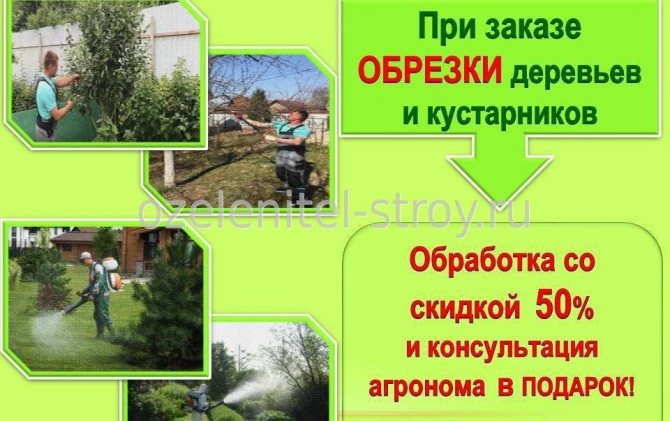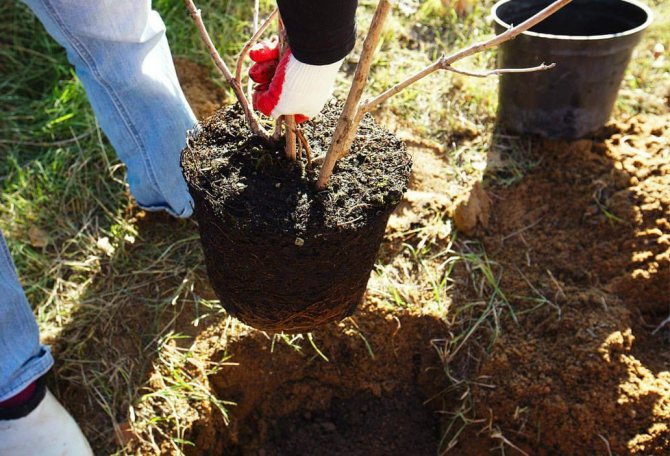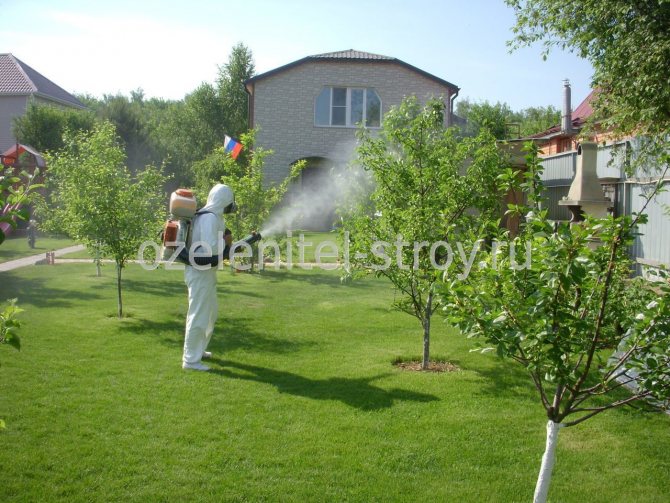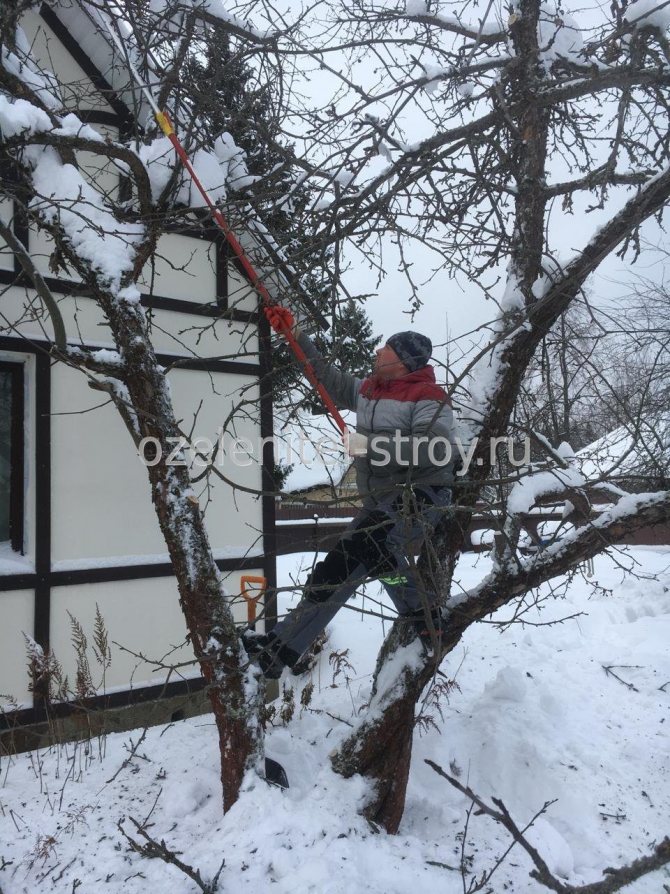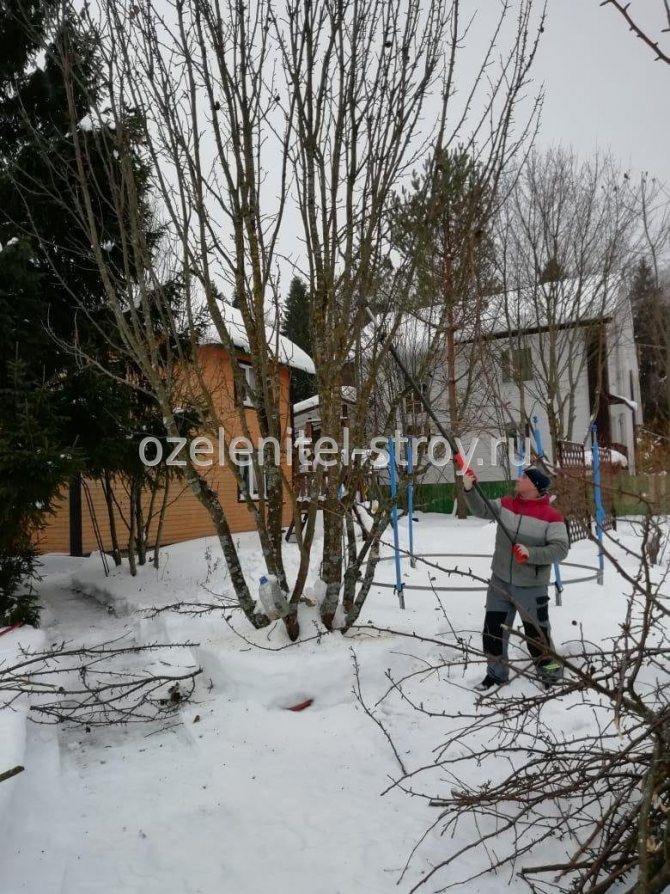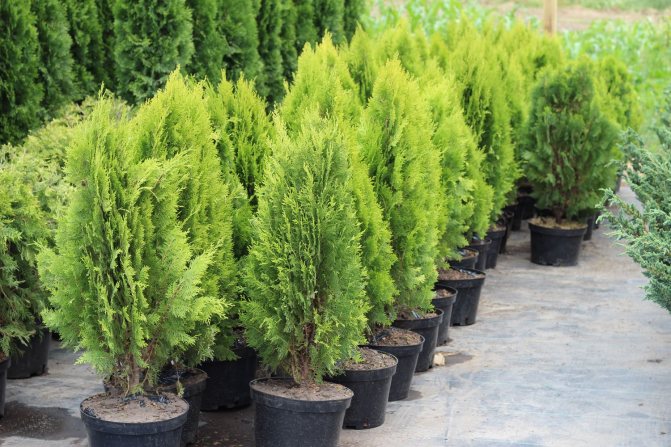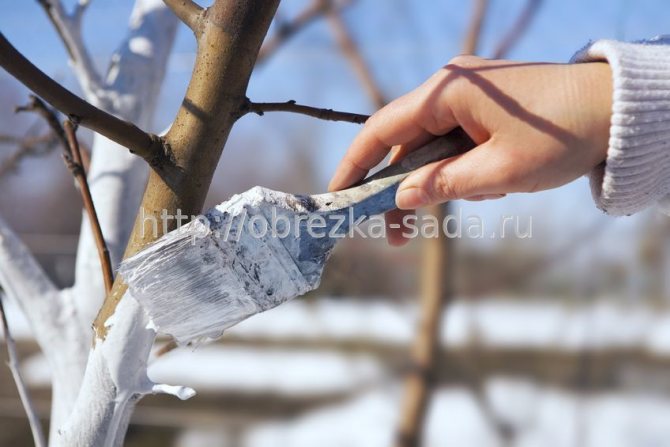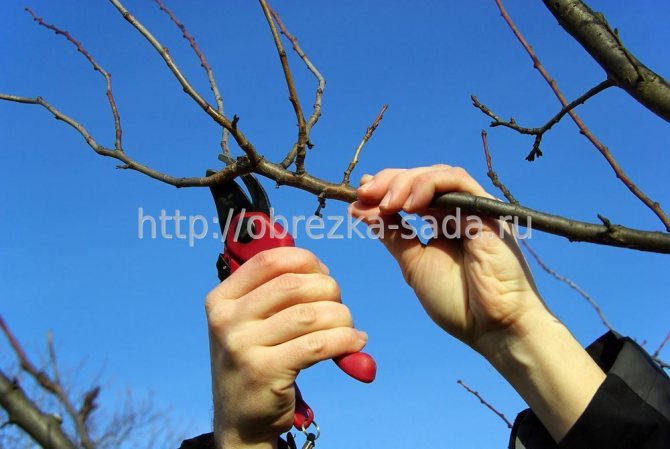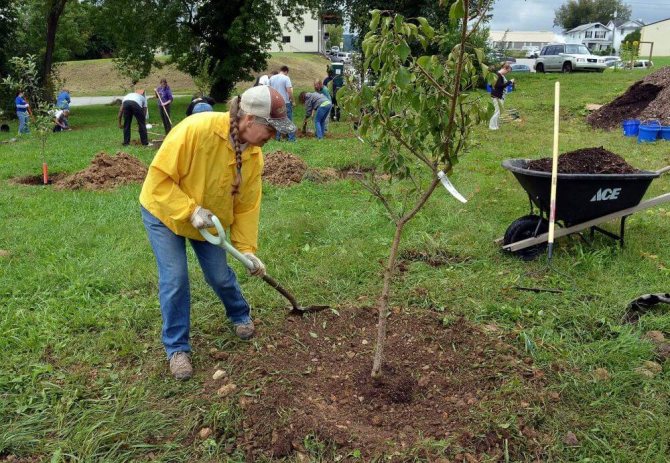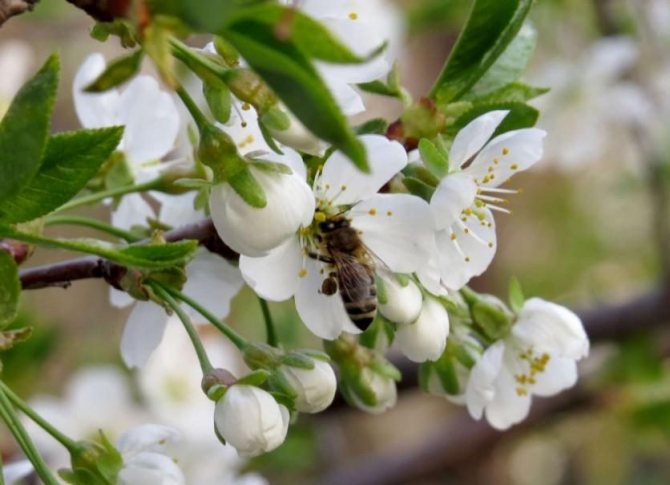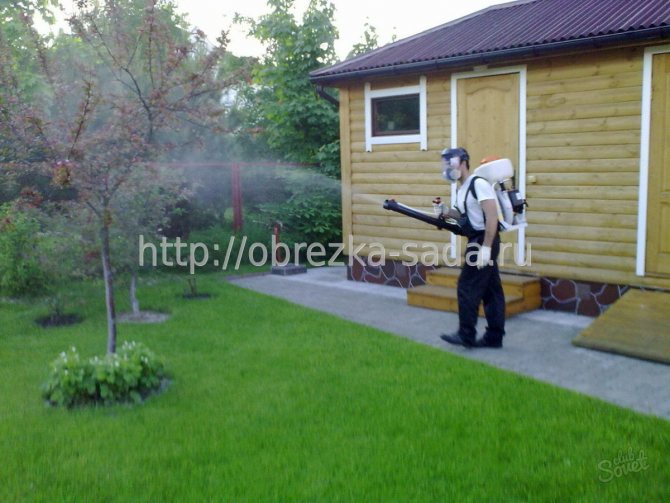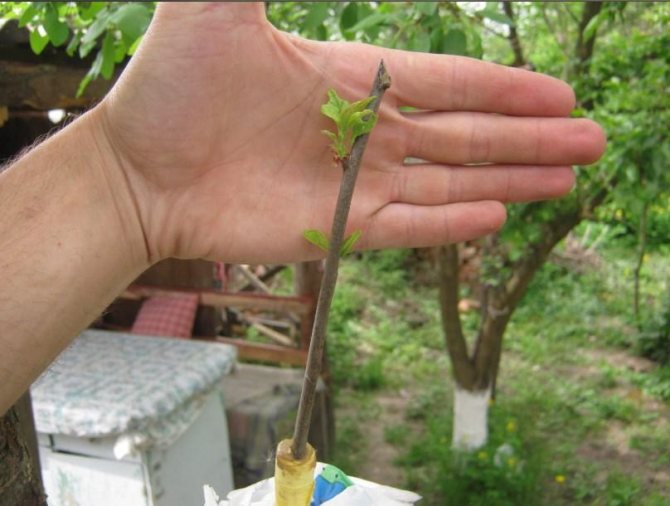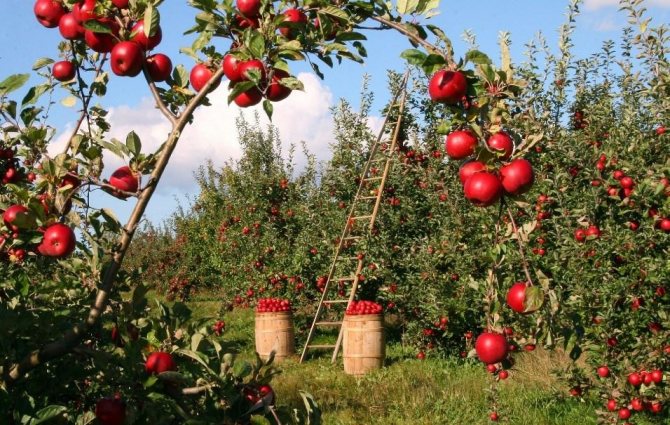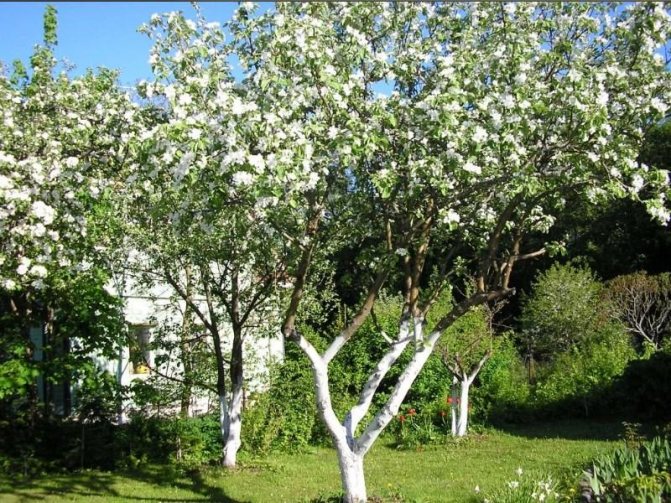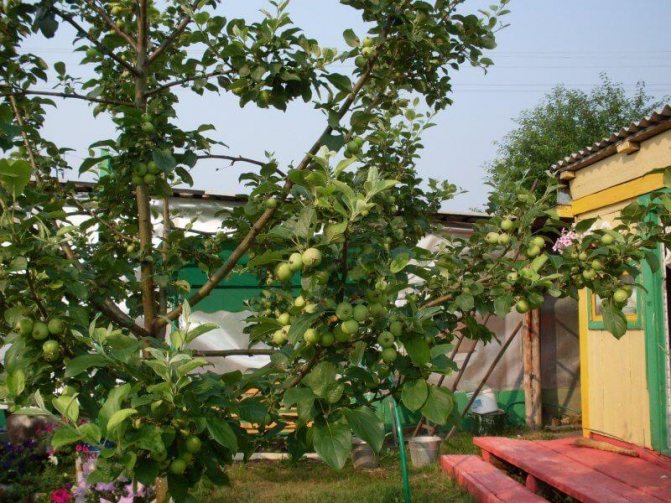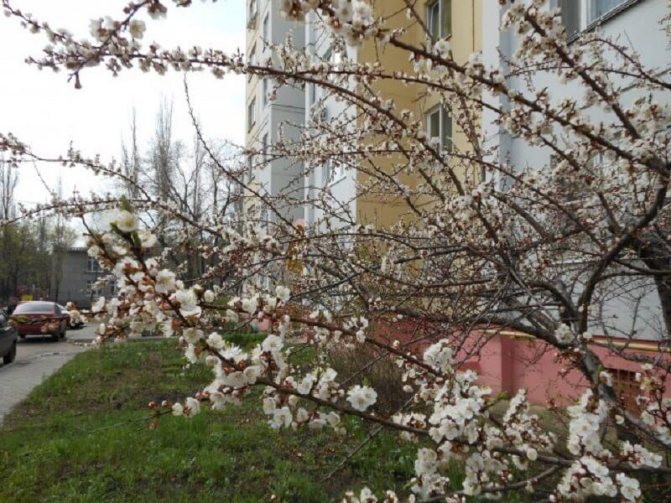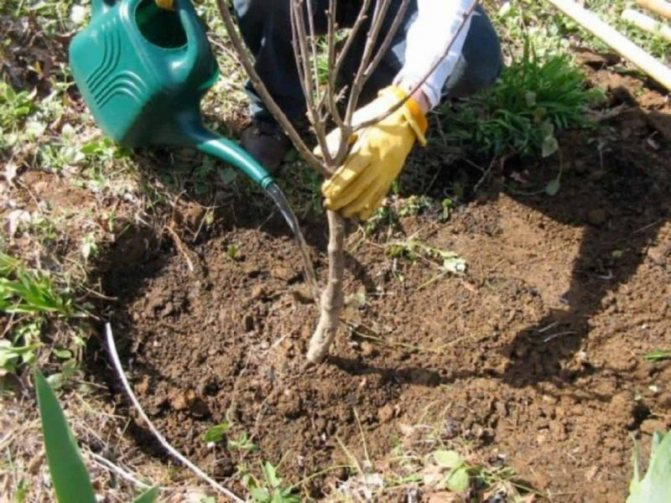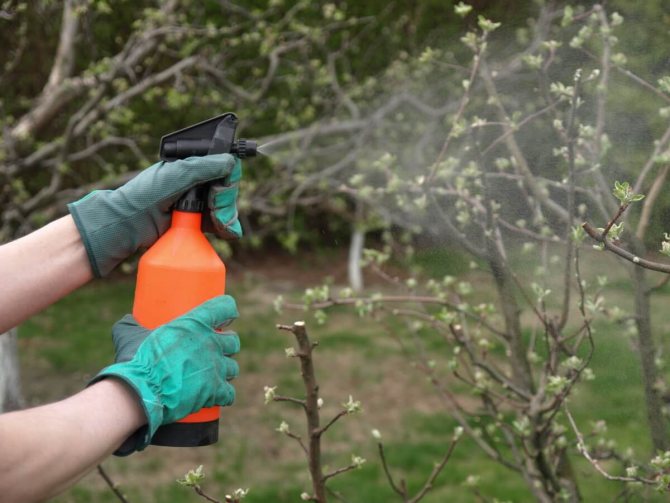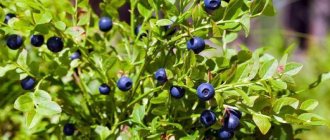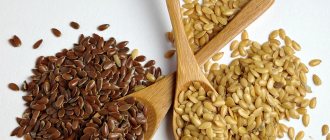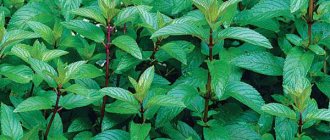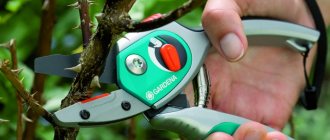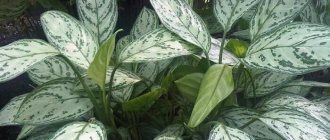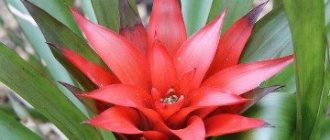
Home / Services / Tree care


Both forest trees and orchards growing on private plots need regular maintenance. Taking care of trees smooths out the influence of anthropogenic factors and prolongs their life. Trees in private plots require a special, careful attitude to themselves. Indeed, if we are talking about a forest tree, then the anthropogenic load is just as destructive for it as the absence of light or water. Tree care includes regular diagnostics of the condition of trees, their sanitary pruning, crowning, feeding, improvement of the mechanical and chemical composition of soils, treatment of trees from pests and diseases, treatment of hollows, frost cracks, dry slopes, cracks, strengthening immunity and other measures to protect and treat trees ...
At different times of the year, they carry out their own tree care activities. Early spring is a rejuvenating and formative tree pruning. In spring and summer - tree feeding and strengthening of their immunity. In the fall - sanitary pruning. In winter, it is often necessary to remove trees or parts of the crown damaged by snowfall or ice. Throughout the year, emergency trees are screed, hollows and bark injuries are treated. Spraying of trees may be required during the growing season and the period of pest activity. Each case is different. Each tree is unique. Taking care of trees is a special job. Sometimes, checking the most insignificant care measures can save a tree from death and extend its life for many years.
Spring
Tree care in spring begin with "Undressing" boles. With the arrival of heat (when the air temperature ceases to fall below zero), the need for heaters disappears. When you remove the roofing felt coats from the boles, carefully examine them for injuries. If mice or hares could get through the insulation to the bark, immediately start treatment. Small wounds are healed with ferrous sulfate (5% solution). It is necessary to clean the bark at the site of injury, spray the wound with a solution and apply a garden var.
Tree care in March includes pruning... All damaged shoots are removed: branches that have received frostbite or injuries caused by pests. As a rule, shoots that have been damaged by insects are cut off in the fall, but if for some reason you did not find such branches in the fall season or did not clean the crown, spring is a great time to catch up. By the way, you can remove shoots on any day during the entire winter hibernation, observing one condition - the air temperature should not fall below -8 ° C.
After the first spring month, gardeners prepare for the following procedures included in tree care at the end of March: whitewashing and spraying... It is necessary to whitewash the trunks in order to avoid injury. White "paint" serves as a reflector of the sun's rays. Thus, the bark does not overheat, accordingly it does not crack and the plant does not get burned. In addition to the listed advantages of whitewashing, there is another plus: it burns out eggs and pupae of insects. During stripping of the bark (a preliminary measure before staining), the nests of pests are destroyed, and the whitening composition burns out the rest. At the end of March, the first spraying against diseases is also carried out.Trees are treated with special compounds several times per season. Each spraying has its own purpose:
- control of garden pests;
- destruction of microorganisms (bacteria) - pathogens;
- development or enhancement of immunity to diseases.
Plant processing Is extremely important tree care in April. The garden is sprayed not only before the buds swell, but also during and after flowering. You can find more information on crop management in the Pest Control section.
Spring is desirable fertilize the soil in the garden... During this period, nitrogen-containing and complex compounds are introduced. The root feeding method is mainly used.
Professionals Tree scientist will help to put things in order on the site. Just give us a call and experienced gardeners will come to the rescue! 

Fruit trees after winter
This plant will add variety to your site.In the light shade of deciduous trees, they feel just fine. Even less light is needed for lamb, common sour and many species of ferns. Some plants with thickened roots (cyclamen, spring) and early spring bulbous also like to grow under the canopy of foliage. Near trees with superficially creeping roots, you can plant, for example, large-rhizome geranium, large-leaved brunner and gingerbread.
The most important condition for the growth of fruit trees is also the level of groundwater.
In advance, it is necessary to prepare pegs for garter trees and place them obliquely from east to west at a distance of 35-40 cm from the stem of the seedling.
Summer
Summer care for fruit trees - This is mainly a periodic inspection of the planting area and the solution of problems in the garden. What to look for and how to solve it is described in the table:
| Problem | Decision | Notes (edit) |
| Pests | Spraying | Insecticides are used against the desired type of insects |
| Diseases | Plant processing | Fungicides or special preparations against the detected disease will help here. |
| Lack of micronutrients | Foliar dressing | Fertilizers saturated with a deficient element |
On especially hot days, you need to pay attention to the moisture content of the soil. Peach, plum, cherry tree care often includes summer watering... Moisture deficiency affects the quality of the fruit. With a lack of water, they wrinkle, the taste characteristics deteriorate significantly.
The most enjoyable summer activity - harvesting. :) Do not forget to remove fallen fruits, you should not breed rot in the yard - this is a source of bacteria, contributing to the rapid spread of pathogens throughout the site.
Felt cherry. Planting and caring for a fruit tree
With the beginning of the growing season, all attention should be paid to caring for the leaves. They must be protected from plant pests and diseases. To do this, remove weeds, moisten, loosen the soil under the trees. It is useful to repeat feeding with organic and nitrogen, and, if necessary, with phosphorus-potassium fertilizers. It will not be replaced by any non-root top dressing.
Another operation to save the tree -
Top dressing of fruit trees in the spring is carried out until the beginning of May (in a warm year) or in April (in an overly warm year, as in 2019) organic fertilizers can serve as top dressing: manure, humus, bird droppings and mineral fertilizers, mainly nitrogen fertilizers. Of these, it is better to take potassium, calcium or ammonium nitrate (20-50 g per square meter of area) and feed the trees.
.
This tree is highly resistant to pests and microbial infestation. But in recent years, cases of damage to felt cherries by specific fungal diseases have become more frequent. They creep up to the tree gradually, hitting first young shoots, and then completely all the greenery. It is necessary to process cherries with a solution of foundationol - spraying should be carried out during the flowering period.Also, the tree can be gnawed by mice - it is better to immediately surround it with a net.
Felt cherry. Planting and caring for a seedling
In addition to other factors, the natural conditions of plant life will serve as a guideline. So, herbaceous perennials "living" in forests, for example, liverwort, lungwort or astrantia,
The dose of these fertilizers: organic 10-12 kg, ash 2-3 kg in the pit. Of course, the quality of the soil must be taken into account: on heavy clayey ones, more organic matter is introduced, on acidic ones - more ash, on neutral and alkaline ones, the introduction of ash should be limited.
One supports the seedling, spreads the roots along the cone of earth in the hole, and the second falls asleep. It is necessary to plant the tree so as not to deepen the root collar (the place where the roots pass into the trunk). To do this, a board with a cut in the center is placed on the edges of the pit and the level of the root collar is planned along it (and not by eye). The central root of the seedling is directed downward vertically, and the rest of the root system is evenly placed in the circle of the seedling trunk downward. If we allow the intertwining of the roots, then with growth they will cut into each other, which will lead to a premature drop in yield, and then the death of the entire plant.
Fall
Taking care of trees in the city in autumn consists only in whitewashing boles, and then - housing and communal services workers, as a rule, limit themselves to "painting" the poles with lime, without peeling the bark. This attitude affects the general health of the plantings, which leads to diseases, as a result of which the plants wither (dry out). The consequences of urban care can be observed during strong gusts of wind and thunderstorms. If you want your plants to be healthy and delight you not only with their beauty, but also with delicious fruits, they need to be well taken care of.
Consider what activities are carried out to care for trees in a fruitful garden:
- Application of mineral and complex fertilizers... For the winter, nitrogen-containing compounds are not introduced into the soil, since they slow down the process of preparing plants for sleep. If you "feed" the garden with nitrogen, it will not have time to go into hibernation in time, as a result, most of the plantings will die from frost.
- Spraying against rot and stains. If fungicide treatment is not carried out in the fall, harmful microorganisms will spread throughout the planting. They successfully overwinter inside trees (they are transported by the sap to all parts of the plant), which will affect the overall health of the garden (the recovery from sleep in spring will slow down, the vegetation will worsen).
- Whitewashing of boles. Unlike “urban” tree care, proper tree care in the fall involves cleaning old bark before whitewashing. The bark is carefully removed with a scraper or a metal brush, after which it is opened with a special whitening compound.
- Pruning. It is necessary to remove all branches damaged by pests, as well as shoots that have received sunburn. Recall that pruning can be carried out before the onset of severe frosts (until the mercury column drops below -8 ° C).
- Cleaning of the territory. It is highly undesirable to leave garbage on the site. As mentioned above, this is the habitat of bacteria. In addition, insect pests can hibernate in cut shoots and foliage.
- Installation of protection against rodents, as well as measures to increase the winter hardiness of the garden - installation of heaters on the booms, if necessary: warming the root system with sawdust, covering the crowns with straw.
We provide professional care for apricot, apple, plum and other fruit trees. Your plantings will receive quality care, and the cost of our services will bring a pleasant smile on the face of any owner! 

Caring for fruit trees in spring
On a plot of 6-8 acres, apple and pear trees are located at a distance of 3-3.5 m from each other, plums, thorns, cherries, sea buckthorn - 2-2.5 m, currant bushes, gooseberries - in rows of 1 m, between rows of 2 m. Raspberry when planting with a line of 15 cm. bush - 0.5 m.
- how to correctly and efficiently trim;Re-grafting of damaged trees this spring, as well as in the next 2-3 years, should not be done, especially ifSpring pruning of branches,Eating soil around the tree is dry - water it. When you apply top dressing, dig up the ground 8-12 cm, just do not damage the roots of the fruit. After 5-7 days, but before budding begins, trees can be sprinkled with 2-3% urea solution. During the entire growing season, float the soil well, make sure that it does not dry out and does not become waterlogged.Determine exactly how irreversible the consequences of the past winter for a particular tree, shrub, we can only in the middle of summer, observing their behavior. Fruit
Pesticide use and disease control
- Timely detection of symptoms of diseases and their prevention is the key to a healthy garden.
- At the end of winter, spray the trees with a solution of diesel oil, which can be purchased at specialist gardening stores. Thanks to this treatment, you can prevent the appearance of pests. Solar oil destroys the larvae and eggs of pests that could successfully overwinter on the plant.
- Examine each plant closely throughout the spring. If signs of illness are detected, take immediate action to combat them.
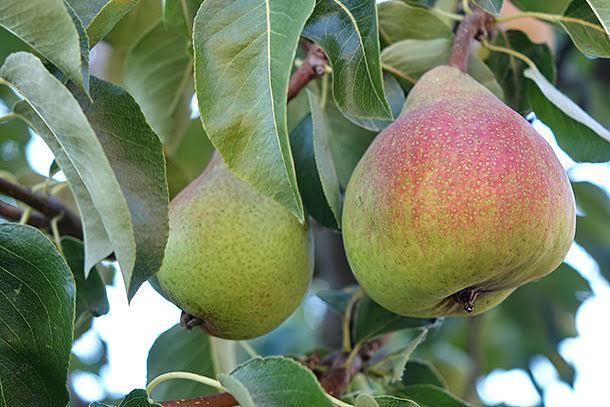

Frost protection for garden trees and shrubs
We leave snow near the trunks for as long as possible, covering it with a layer of sawdust, peat, humus, compost. In order to prevent the defeat of tree boles from severe spring frosts, we compact the snow around the bole harder. Only after the final melting of the snow cover, we finally remove the winter shelters (boles strapping). An earlier removal of the protection from the cold leads to damage to the bole in spring frosts.
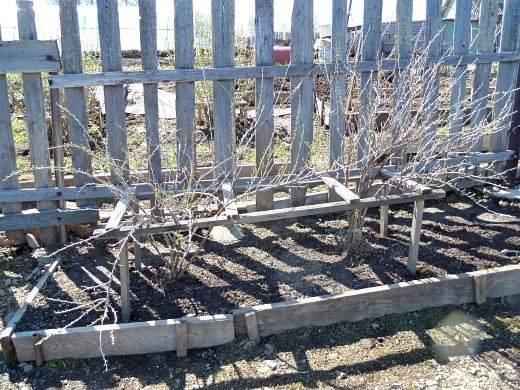

Care rules for berry growers
Raspberry, gooseberry, currant
Berry bushes require no less attention than fruit trees. Those who, after planting, did not have time to cut the currants and gooseberries by 3-4 buds, can do it now, in June. The procedure promotes the formation of lateral shoots and the formation of a real bush.
On plantings of raspberries, they monitor the awakening and growth of renewal shoots at the base of the planted seedling. Some hobbyists leave the long shoots of the past year, wanting to get the berries. However, this is erroneous, this approach greatly weakens the growth of new shoots and significantly reduces the next year's harvest.
Last year's stems are cut at a height of 15-20 cm, which contributes to better regrowth of new shoots. It is advisable to mulch the soil with manure or use slurry for irrigation. When new shoots grow back, they are tied to stakes or horizontal wire to avoid breakage.
Strawberries, strawberries
When planting garden strawberries (strawberries), the main task in the first year is to achieve the formation of at least 3-4 new horns on the mother's horn. Peduncles will form on them in the fall, thereby laying the foundation for a high yield. This is facilitated by the timely regrowth and development of the leaves. Removing peduncles and whiskers is an important factor in accelerating these processes.
Enhance the growth and mulching of plants with humus or compost with a layer of 3-5 cm after the regrowth of leaves - the heart and optimum soil moisture.
Depending on the weather conditions, the plants are watered every 7-10 days. Many have installed a drip irrigation system - this is the most reliable irrigation tool. In November, plantings of strawberries are covered with dense non-woven material.
In the fight against weeds, it is effective to mulch the soil under the bushes with a black non-woven material, which prevents their growth, while allowing moisture to pass through.
From time to time, you need to monitor the pests and diseases of the berries.When they appear, the plants are sprayed with a mixture of Fu-fanon and Hom preparations. When the first signs of powdery mildew are detected on currants and gooseberries, the plants are treated with one of the biofungicides
Processing of a trunk and branches
We clean tree trunks and large branches from dead bark, mosses and fungi. When stripping plants, we use sharp garden tools, carefully cover all damage on the surface of the bark with garden varnish in order to promote rapid healing of wounds and prevent secondary infection with various diseases.
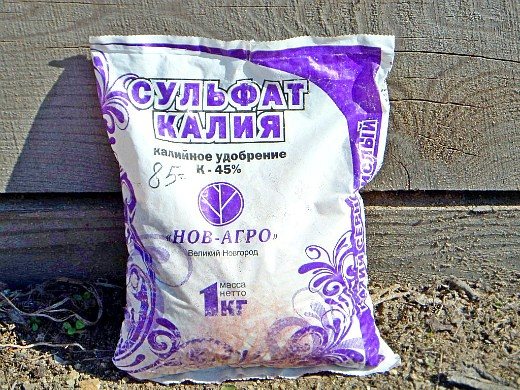

Planting dates for seedlings with a closed system and in containers
Grafting trees in spring, ways of grafting fruit trees for beginners
To get a healthy tree, many nurseries plant seedlings in special containers, bags or nets. This technique helps to form a healthy plant root system.
The container can retain the root for a long time, so immediate planting after purchase is not required. Such sprouts can be planted in any summer, spring or autumn season. The main condition is positive air temperature.


Seedling from a container
Lovers of autumn plantings
September is definitely a great time to plant gooseberries. This is a real Russian friend of a gardener who loves to swim in the sun and rather prefers some short-term drought to a slight overflow. From excess water, it begins to rot from the roots and dies. But with a short dry period, it grows with even greater pleasure. The main thing is to keep it in an open place and protect it from strong winds.
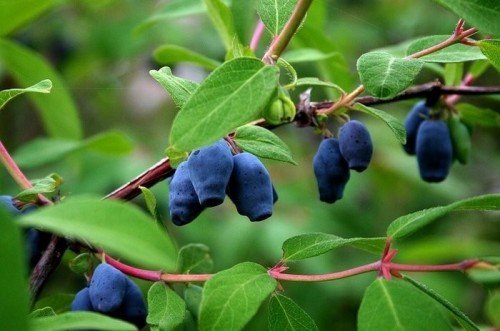

The gooseberry rejoices in the neighborhood with young trees, although it is recommended to plant it no closer than two meters away from them. It is good both as separate bushes and as a hedge, which is often built along fences. The best planting time for gooseberries is not only September, but also October. Before planting, it is necessary to dig a hole, and dip the roots of the shrub itself in a clay solution so that they acquire good protection.
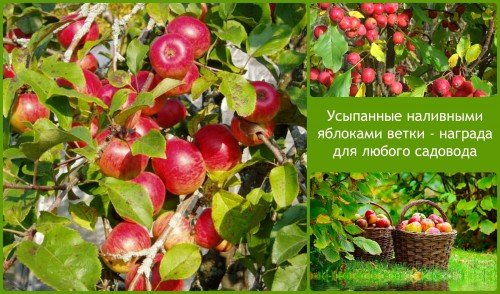

At the same time, honeysuckle is also planted, which is close to gooseberries in spirit and also loves the sun and cannot stand strong winds. If necessary, she can live in partial shade, but it will develop worse, so it's better to save a place for her in the sun. Before planting honeysuckle, add organic fertilizers to the prepared hole, the composition of which will depend on the type of soil on the site. Potash fertilizers are especially useful, but they are not suitable for all types of soils.
How to plant a seedling
If you have picked up a seedling and, finally, have chosen a place to plant it in your garden, you can start planting. When is it better to plant trees, in autumn or spring? It all depends on the plant itself. Here is a detailed step-by-step guide for any type and variety of fruit trees.
- Before planting, remove all weeds and grass on a 2 sq. m.
- Clean the roots of the seedling from the soil and rinse with cold water. Additionally, inspect for mechanical damage or signs of illness.
- Dig a hole about twice the diameter of the root system and at least 50-60 cm deep.
- Mix the resulting soil with any organic fertilizer (compost, humus, manure).
- Partially fill the hole so that the trunk is in the position where the tree grew in the nursery (usually visible by the bark).
- Place a seedling in the hole and bury it with the previously mixed mixture.
- Compact the soil slightly and water abundantly for several days to avoid air pockets in the soil.


Attention! When planting, it is better not to add mineral fertilizers to the pit, as this can "burn" the roots. Better to use a small amount of dry mineral fertilizers, placing them under the tree trunk. They are evenly absorbed into the soil when watering.
What to do in October?
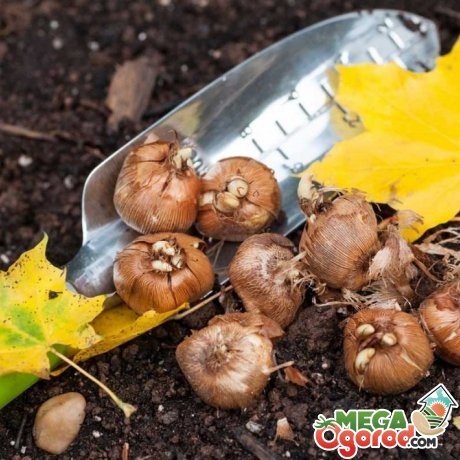

October is marked by the fact that at this time it is recommended:
- Transplant shrubs and trees to a new place of residence. But before starting work, they wait until the plant completely discards all the foliage.
- You should also take care of the fruits of the late harvest. They are checked, like the September fruits, so that they do not have time to overripe. Many varieties are laid for ripening.
- The next stage is top dressing, simultaneously with loosening and processing of the soil.
- Do not forget about planting siderates. The best planting time is early October for the southern regions. For the central regions of Russia and the northern districts, spring crops no longer need to be planted, they will not have time to grow. It's time to plant rye and winter wheat. Until sub-zero temperatures come, these crops will have time to rise well, which means they have every chance to winter well. If the siderates were planted earlier, then October is the time when they can be dug up. Then they will have time to overheat well over the winter and saturate the soil with organic matter.
- In areas with high acidity, you need to reduce this indicator, because not all plants can grow and develop fruitfully in such conditions. For these purposes, liming is carried out on the breasts, scattering lime or chalk.
- Florists continue to plant bulbs. At the first drops in air degrees, tubers of hyacinths are to be planted in the ground.
- After the first frost appears, the tubers of dahlias, gladioli, begonias and freesias with anemones are carefully uprooted. They are stored in a cool place. After a negative temperature is established, hyacinths and lilies are covered with peat, moss, sawdust or pine spruce branches.
Read also: Digitalis: planting and care, the main methods of reproduction and use in landscape design
Preparation time
September is not a withering time at all, it is almost the last song of summer time, when some warm and even hot days are still possible. However, as well as prolonged rainy periods. At this time, a lot of fruits ripen, especially apple trees. The most active period of preparation of trees and shrubs for the coming cold snaps and frosts begins, which are just around the corner. It is very important now to create all the necessary conditions so that later your plantings will safely survive the winter and in the next season will amicably pleased with a good harvest and a beautiful appearance.


There are many different opinions about the best time to plant trees and shrubs in our strip. You can often hear that this is done only in spring or autumn. However, in our lane, this can be done almost at any time. Well, except maybe winter. So categorical statements about the exact time should not be made. But we can safely say that the best time for this activity is autumn. Namely September.
Beautiful trees for the garden
Diseases of fruit trees, diseases of garden fruit trees
In addition to planting fruit trees, it is worth taking care of the aesthetic appearance of the site. There is a huge variety of breeds that have their own distinctive characteristics. The main determinants of beauty are flowers, leaves and the shape of the trunk. Beautiful trees can be evergreen, flowering, or miniature. The choice should be made in accordance with personal preferences and the general concept of the site.
Trees with earrings
Trees with earrings can become a real decoration of a garden or a summer cottage. Usually specimens with "decorations" are low-growing with a fluffy crown. There is a huge variety of options.
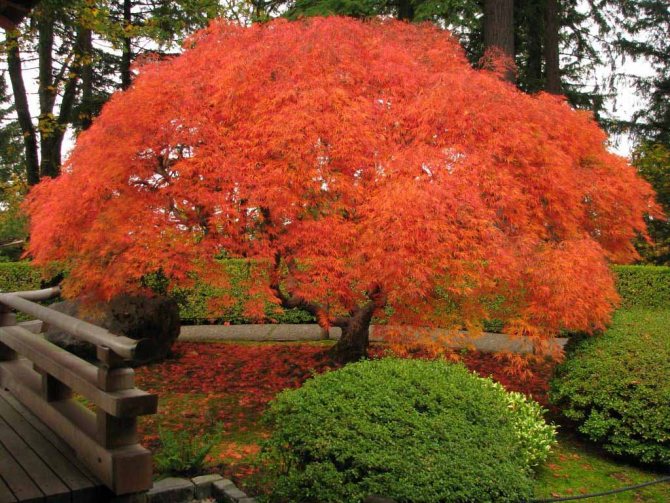

Decorative maple tree with earrings
Ash-leaved maple or American maple is a wild variant of a cultivar that was introduced to Europe over 300 years ago.It spreads quickly thanks to airplane seeds, which are collected in earrings. There are many similar maples that have different leaf colors. Among all the variety, you can choose a cultivated specimen that can be cropped. In addition, you can plant a deciduous version of spruce species. Birch is also a good choice.
Mini trees
Mini trees can be a solution to a common problem when there is little planting space. Thanks to selection, many varieties have been bred that differ in dwarf sizes. It is difficult to accurately determine the name of a particular option, since it can be fruit and deciduous specimens. The advantage is not only the unique size, but also other characteristics.
note! Usually mini-plants are shade-tolerant and easy to care for. Another feature is that such trees are fast-growing, but it is invisible.
Trees with red leaves
To diversify the green color of the crowns, you can choose special varieties of trees in which the leaves are red. The most popular species are red maple and mountain ash. The first option requires special attention, care, and the seedling is expensive. Rowan is a simpler and unpretentious option, but not as spectacular. Trees with red leaves stand out from the usual landscape design and are not too whimsical to care for.
Evergreen trees
It is beneficial to plant evergreen trees in the garden or on the territory of the site. They will delight the eye both in winter and in summer, they do not require special care, there is no need to scoop out fallen leaves. They are conventionally divided into coniferous, deciduous, fruit. The most popular are:
- spruce and its types;
- mulberry tree or mulberry bush;
- fir;
- larch;
- cedar;
- Pine.
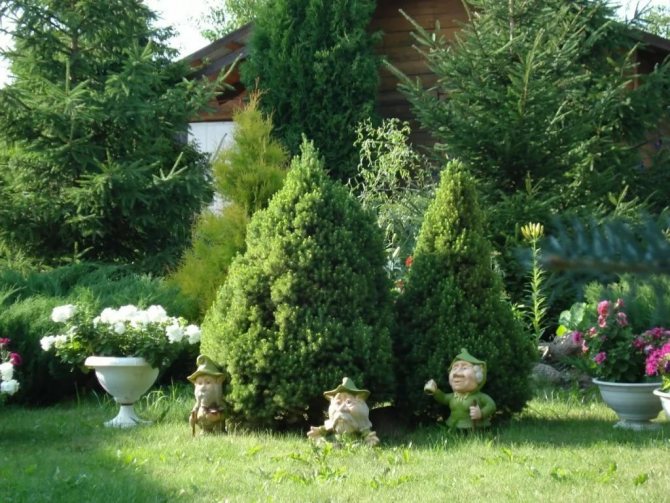

Evergreen tree in the garden
Note! Some seedlings can be dug directly into the forest plantation (spruce, pine). More rare, which are decorative varieties, it is advisable to purchase in special nurseries.
Stump trees
Standard trees are suitable for shaping the design of small gardens, alleys and flower beds. They have an even, neat trunk, the crown can be columnar, spherical, triangular. The wood is even without gusts and snags, branches begin to form at the very top of the trunk.
The trees on the trunk can be fruit trees or deciduous trees. It is possible to obtain such a variant of a plant independently by grafting or forming a crown by cutting. You can pick up a copy with any characteristics. There are drought-resistant varieties, frost-resistant trees with white flowers and many other colors.
A few rules for pruning fruit trees
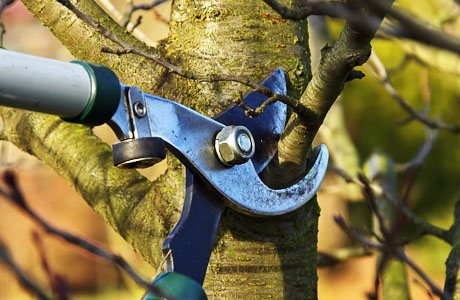

Pruning fruit treesYou need to cut off fruit plants in late autumn after the leaves have fallen. First, this way you can better see what you are deleting. And, secondly, the removal of dormant buds (growth points) gives strength to the remaining buds. Summer pruning removes the leaves, which are the main producers of food, which slows down the process of plant growth and fruit ripening. Summer pruning is only permissible if it is necessary to slow down the growth of overly vigorous plants or oversized plants. This pruning is only effective in early summer.
- After planting a young seedling, it is necessary to begin to form the crown of the plant. To do this, you need to find branches at a level of approximately 80 cm and remove all side shoots below this level. This promotes low branching and balances the top of the tree and the root system.
- Since young trees are not yet strong enough, they do not require aggressive pruning. At the same time, it is necessary at an early stage to try to identify clear leaders among the branches and maintain their horizontalness. All shoots that arise on these branches and grow up and into the plant must be removed so as not to thicken the crown.The first three years the tree will not bear much fruit, therefore it is during these three years that you can calmly engage in the formation of the crown, leaving the horizontal branches higher and higher, which must be taken into account when designing landscape design
- When pruning a plant, remember that removing vertical shoots helps light penetrate into the crown, and pruning horizontal branches removes fruits. Uncut horizontal branches often bend under the weight of the fruit, so they need support.
- The right balance between horizontal and vertical branches is the key to good fruiting. After all, the vertical branches are responsible for the vitality of the plant and its growth. And horizontal - for the production of fruits.
- An important factor is the removal of old and diseased branches, lateral shoots, and shoots growing directly into the trunk of the tree. Branches producing only a few small fruits and bending perpendicular to the main branch (i.e. growing downward) should also be pruned.
- The cut should be done as close as possible to the main branch or to the trunk of the tree, without leaving any "hemp". After pruning, fresh cuts need to be treated with garden varnish.
- The sun is the main factor in abundant fruiting. Shaded branches gradually cease to bear fruit, so it is not recommended to launch the crown of the tree. Otherwise, radical pruning will have to be done to rejuvenate the tree.
Add a comment
Comments on the article
Katya 08/31/2017 I live in my house, I have a small garden of fruit trees. Some pluses. And the fruits are always fresh, and the trees are unpretentious, and the site is ennobled. The only difficulty for me was finding where to buy fruit trees, as I had heard enough of all sorts of horrors about low-quality seedlings, etc. I chose for a long time, read the reviews and eventually bought it in a plant nursery in the Moscow region, where you can come and choose everything in fact, or you can make an order via the Internet. It is very convenient, and, most importantly, the seedlings have taken root very well.
Whitewashing trees
Whitewashing trees in autumn helps not only fight pests, protects against diseases and sun rays, but also protects the tree from severe frosts and temperature changes.
It is better to whitewash young trees with chalk and cover not only the trunk, but also the skeletal branches.
Before whitewashing, the trees are cleaned of moss and lichens, the old bark is removed by hand. The thickness of the whitewash should be at least 2-3 mm. You can buy a whitewash solution at a store or make your own. The solution consists of 10 liters of water, 2 kg of lime and 200 g of copper sulfate. You can add 1 kg of clay and straw for thickening. You will get a clay talker that will last a long time on the tree.



